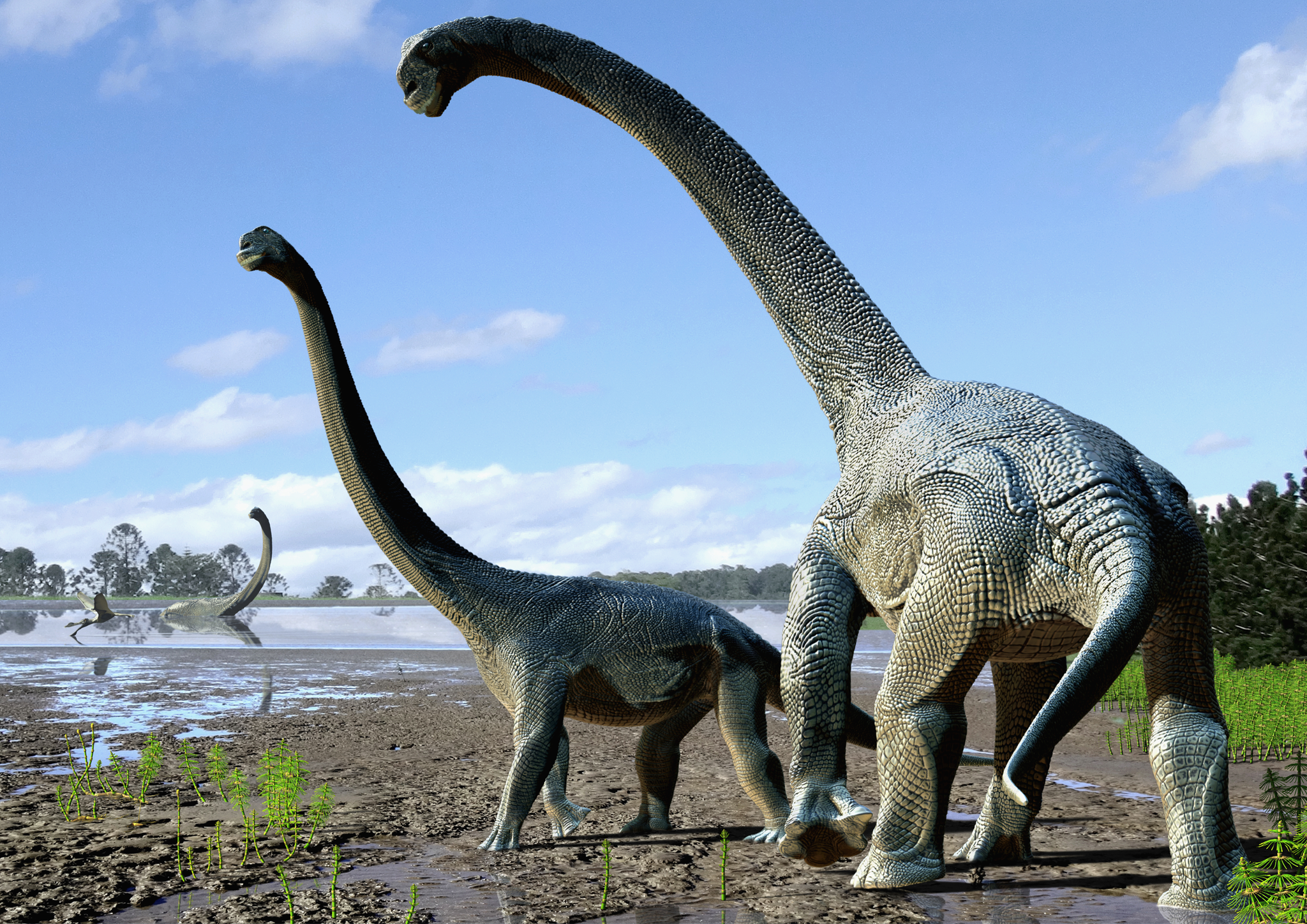The age of the dinosaurs was filled with incredible diversity, from the towering giants of the Jurassic period to the smaller, more agile species that scurried across ancient landscapes. Among the most distinctive and well-known dinosaurs were the long-necked sauropods, such as Brachiosaurus, Apatosaurus, and Argentinosaurus. These massive herbivores had necks that could stretch up to 50 feet, making them some of the largest creatures to ever walk the Earth. But despite their enormous size, how did these long-necked dinosaurs protect themselves from predators? In this article, we will explore the fascinating ways these colossal animals might have defended themselves in a world filled with dangers.
1. Size and Physical Presence
One of the most obvious forms of protection for long-necked dinosaurs was their sheer size. The majority of sauropods were enormous—some grew to lengths exceeding 100 feet and weighed up to 80 tons. This massive size made them formidable opponents for any predator. While they were not particularly fast or agile, the sheer scale of these creatures likely deterred many predators from attempting an attack. A large predator like T. rex might have been cautious when it came to taking on a full-grown sauropod, knowing that such a confrontation could be fatal.
Furthermore, some species of long-necked dinosaurs, such as Brachiosaurus, had a high body position, with their heads held high above most other animals. This unique posture meant that they could access food from the tops of trees, but it also gave them a better vantage point to spot potential threats in the surrounding environment.
2. Defensive Posture and Strength
While the long necks of these dinosaurs may have appeared cumbersome, they could have been used in ways that aided in self-defense. A long neck allowed these dinosaurs to swing their heads and potentially lash out with great force, particularly with their tail. Though they were not known for having sharp teeth or claws for combat, the power behind their body and neck movements could have been used to knock back or strike at predators.
In addition, the tails of many sauropods were long and muscular, capable of delivering powerful whips and slaps. Some paleontologists believe that a well-placed strike from the tail of a sauropod could be enough to injure or scare off a predator, much like how elephants today use their trunks and tusks in defense. The tail might have been a highly effective tool for warding off threats, particularly when combined with the size and strength of the animal.
3. Herd Behavior

Sauropods were not solitary animals; they often lived in large herds, and this social structure was one of their most effective forms of protection. By grouping together in numbers, these dinosaurs could create a unified front against predators. Herds provided mutual protection, with larger, stronger individuals guarding the vulnerable members, such as young or weaker adults. The presence of multiple animals also made it more difficult for a predator to single out and isolate a target.
Moreover, the herd’s collective vigilance meant that the animals could spot threats from a distance and take action quickly. It is likely that when a predator approached, the entire herd would respond, either by fleeing in unison or standing their ground in a protective formation.
4. Defensive Behavior and Speed
Although sauropods were not built for speed, they were still capable of quick movements when necessary. The speed of a full-grown sauropod may have been slower than smaller dinosaurs, but in a herd, they could still move at a pace that would make it difficult for a predator to catch them. Juvenile sauropods, being smaller and more agile, could likely run faster, and their quick movements could have helped them evade predators, especially in the early stages of life.
Some species may have also displayed defensive behaviors that involved large-scale movements or forming defensive clusters. For instance, young sauropods might have been surrounded by adults for protection, similar to how modern herbivores like elephants and bison form defensive circles to protect their young from carnivores.
5. Camouflage and Habitat
Another form of defense was their habitat. Sauropods often lived in dense, lush environments such as forests, where the abundance of vegetation could help them blend in with their surroundings. Though they were too large to fully hide, the thick foliage may have provided cover that made it difficult for predators to approach unnoticed. Additionally, these environments would have provided ample opportunities for the dinosaurs to find shelter, whether in swampy areas, along riverbanks, or in forests where the terrain could impede the movement of predators.
6. Evolution of Specialized Defenses
Some long-necked dinosaurs evolved additional physical features that may have enhanced their ability to protect themselves. For instance, certain sauropods had armored plates or spikes on their bodies. The titanosaurs, a subgroup of sauropods, often had bony armor in the form of osteoderms, which are hardened, bony deposits in the skin. These could have offered protection against bites or scratches from predators.

Conclusion
While the long-necked sauropods were not equipped with the traditional means of defense such as sharp teeth or claws, they used their immense size, herd behavior, physical strength, and environmental awareness to protect themselves from predators. Through these adaptations, they thrived for millions of years in a world where dangers loomed large. Ultimately, the combination of social structure, physical traits, and defensive behaviors helped these iconic creatures survive in a competitive and often perilous world. Their legacy endures in the fossil record, reminding us of the remarkable ways in which nature equips its creatures to survive.



